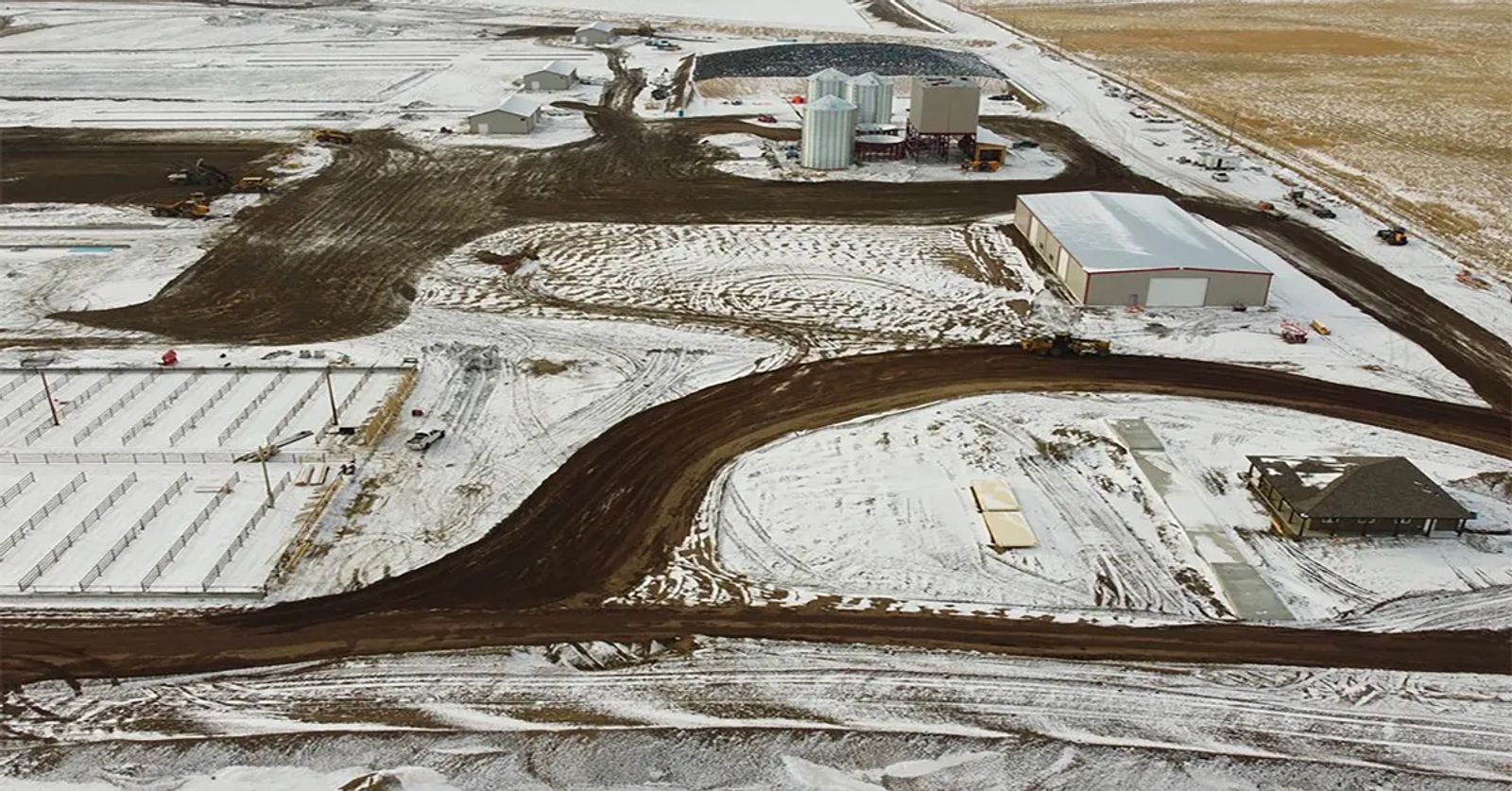
New Feedlot to Open Next Year in Alberta, Canada
December 1, 2020
A new 40,000-head feedlot north of Enchant, Alta., is on pace to start accepting cattle as early as March.
Serfas Farms began the project in June and it is expected to be fully complete in the third quarter of 2021. The new build is likely the first large from-scratch feedlot to be built in the region within the past decade.
“There’s actually been a major shortage of pen space in Alberta the past few years,” said Kevin Serfas, managing partner of Serfas Farms. “Guys that have wanted to try to feed cattle, there’s been no pen space or the pen space that was available might not have been highly desirable. We saw an opportunity and decided to take it.”
The Enchant-area location is north of “feedlot alley,” the area extending around Lethbridge to Picture Butte and Turin, where most of Alberta’s feed yards are concentrated.
The available land base for a feedlot of this size is unlikely to be available nearer Lethbridge.
“The more we get down the road with this, the more we realize it’s actually a fantastic spot to put a yard and to do this kind of work,” said Serfas.
“We didn’t set out, when we were buying some of this irrigation land in that Enchant area, it was never the long-term plan to put up a feed yard but all of a sudden we had a land base that was going to make it work and we decided to go with it.
“We’re able to add value to our own crop, basically. We can feed our own barley. We can grow our own corn for silage. We can put manure on our land.”
Serfas Farms planted 55,000 acres of crop this year and put up silage at the new site.
It will also buy feed grain from farmers in southern Alberta and beyond, as the need arises. At its peak of 40,000 head on full feed, he estimates the feedlot will require 500 tonnes of feed grain daily.
Serfas said response to the new operation has generally been positive.
“It’s another place for ranchers to put cattle, another buyer. It’s that much more demand for feed grain. Even the local and area guys are excited that there will be some manure available for land, a close market for some straw.”
Serfas said the operation will feed its own cattle as opposed to custom feeding. It will thus compete with other feedlots for feeder calves but not for custom-feeding clients.
Area feedlots have been losing hundreds of dollars per head in the last few months, in part due to fed cattle backlogs that occurred as a result of COVID-19 related slaughter plant slowdowns and temporary closures this spring.
However, feedlots with staying power are able to manage the price swings typical of the industry.
“Maybe this year might not have been the best year to decide to take on a project like this, but who’s to say that things don’t completely turn around next year, either,” Serfas said.
“You have to ride out the highs and lows. If you kind of manage your risks as best you can and not leave yourself open … hedge your cattle, hedge your grain, it smooths those cycles out a little bit.”
The new feedlot will employ about 40 people.
Source: The Western Producer










